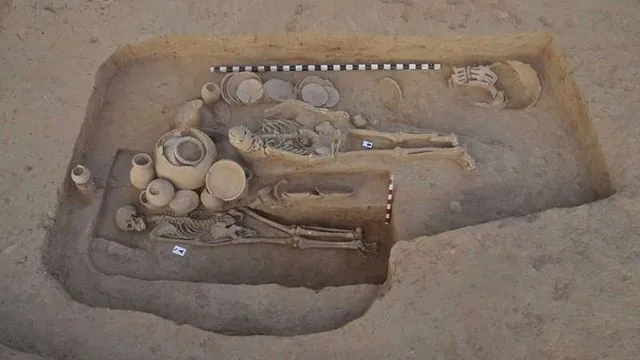
Unlocking the Secrets of Early European Adaptation Through Ancient DNA
2024-11-20
Author: Michael
Unlocking the Secrets of Early European Adaptation Through Ancient DNA
In a groundbreaking study, researchers from The University of Texas at Austin and the University of California, Los Angeles have delved deep into ancient DNA extracted from human skeletal remains, uncovering fascinating insights into how early Europeans adapted to their environments over a span of 7,000 years. This pioneering research, recently published in Nature Communications, offers a window into the evolutionary changes that shaped our ancestors.
Lead researcher Vagheesh Narasimhan, an assistant professor specializing in integrative biology and statistics at UT Austin, highlighted the significance of their work: “Studying ancient DNA allows us to track evolutionary changes directly in historical populations, revealing genetic signatures that have been largely erased in today’s genomes.” This approach provides a unique lens to understand the complexities of human adaptation.
The researchers meticulously analyzed over 700 genetic samples from various archaeological sites spanning Europe and parts of modern-day Russia, covering periods from the Neolithic era—approximately 8,500 years ago—to the late Roman period, around 1,300 years ago. Their findings highlight traces of natural selection that can only be observed in ancient DNA, illustrating how certain advantageous genetic traits can fade from the modern gene pool over time.
One major hurdle in studying modern genetic samples is the challenge of detecting ancient natural selection events. As time passes, natural selection leaves behind subtle traces that can get diluted through recombination and genetic drift. Ancient DNA, however, offers a direct glimpse into the genomes of individuals who lived much closer to these events, providing researchers with a clearer understanding of evolutionary changes before they disappeared from later generations.
By employing a novel statistical method tailored for ancient DNA analysis, the research team effectively detected signs of natural selection much more accurately than previous techniques. They organized their samples into four distinct time periods: Neolithic, Bronze Age, Iron Age, and Historical. This method enabled them to explore how genetic adaptations occurred in response to significant lifestyle shifts—most notably the transition from a hunter-gatherer lifestyle to agricultural practices.
The study identified 14 specific regions within the genome that exhibited signs of strong natural selection across these periods. Noteworthy findings included genes linked to the production of vitamin D and the digestion of milk, particularly during the more recent epochs. These adaptations—light skin pigmentation for better vitamin D synthesis in lower sunlight areas and the ability to digest lactose, which became essential with the rise of dairy farming—illustrate how early Europeans leveraged their environment for survival.
“It’s vital to note that the ability to digest dairy may have played a crucial role in survival during times of food shortages or disease outbreaks,” Narasimhan elaborated, emphasizing the significance of these genetic adaptations.
The researchers also observed that immune-related genes experienced selective pressures throughout multiple eras, potentially in response to new diseases brought about by agricultural expansion and population movements. Interestingly, many adaptive signals were only detected in the oldest samples, suggesting they either vanished due to genetic drift or became obscured amid extensive population mixing.
This compelling research not only sheds light on how European populations adapted to their environments but also underscores the importance of ancient DNA in understanding human history. The study reveals how traits advantageous for survival in early populations became lost or altered over time, providing a rich narrative of human resilience and adaptability in the face of changing circumstances.
In a world where climate change and emerging diseases pose new challenges, understanding the genetic foundations of our ancestors’ adaptations may hold critical insights for the future of humanity. As we continue to unlock the secrets hidden within our ancient DNA, we might just discover the keys to our own survival centuries down the line.









 Brasil (PT)
Brasil (PT)
 Canada (EN)
Canada (EN)
 Chile (ES)
Chile (ES)
 España (ES)
España (ES)
 France (FR)
France (FR)
 Hong Kong (EN)
Hong Kong (EN)
 Italia (IT)
Italia (IT)
 日本 (JA)
日本 (JA)
 Magyarország (HU)
Magyarország (HU)
 Norge (NO)
Norge (NO)
 Polska (PL)
Polska (PL)
 Schweiz (DE)
Schweiz (DE)
 Singapore (EN)
Singapore (EN)
 Sverige (SV)
Sverige (SV)
 Suomi (FI)
Suomi (FI)
 Türkiye (TR)
Türkiye (TR)